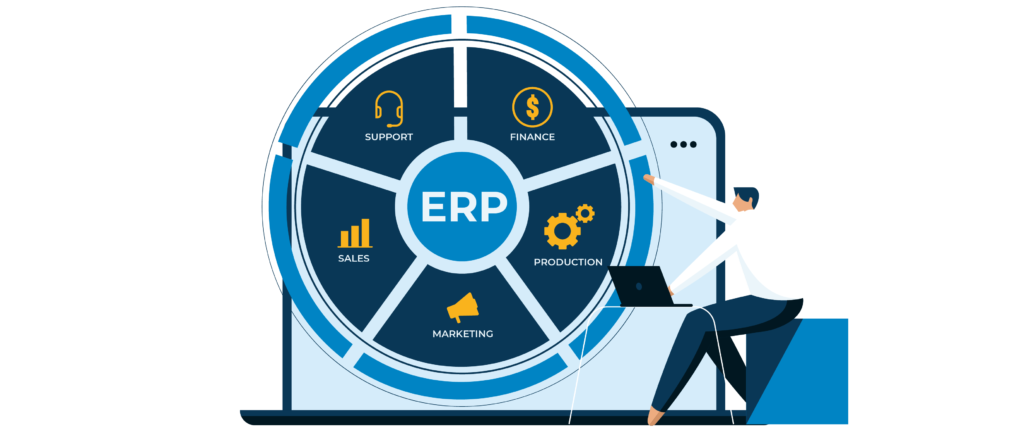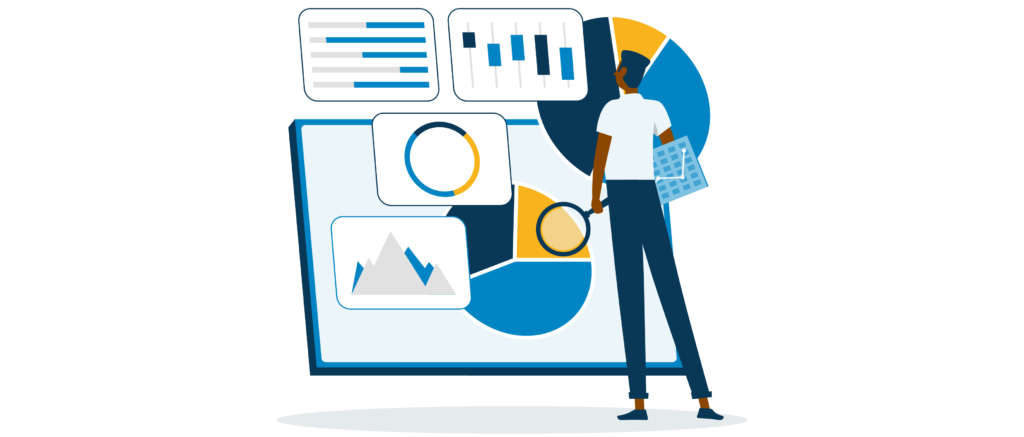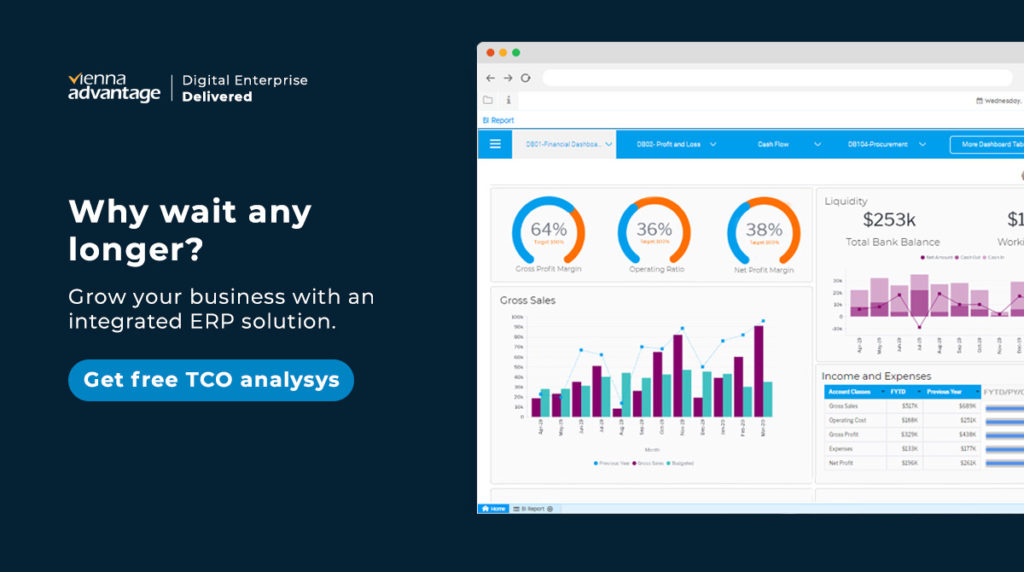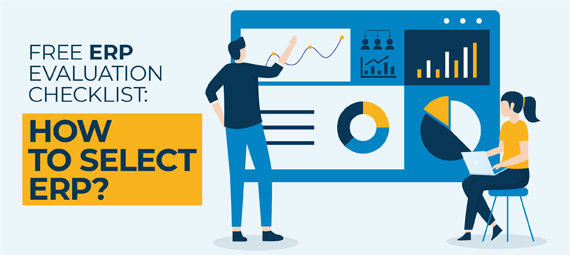An ERP application is the core system in an organization and hence considered the “digital core” of the enterprise. In majority of companies, the lifespan of an ERP application tends to be around a decade. Given these two observations, it is natural for companies to perform detailed and thorough ERP evaluation when they choose an ERP system.
What criteria should drive this due diligence process? To answer this question, we spoke to several customers and service integrators, who have vast experience in implementing and supporting ERP solutions. This article summarizes the key findings from those conversations and is intended to serve as a reference when you go through your ERP evaluation and decision process.
#1 Comprehensive offering of standard ERP modules
Are you an organization that operates in the services industry, or your primary business operations involve trading and distribution? Or maybe manufacturing? Quite often, conglomerates, or holding companies, have several business interests that operate across several industry verticals. An ERP solution will yield commensurate benefits to your conglomerate when all group businesses adopt the same application your organization runs, specifically when it comes to the digital core – the ERP application.

For this to happen, the ERP application you choose must provide a comprehensive set of functionality and ERP modules that are able to satisfy all your businesses, regardless of how diverse their operations are.
#2 Availability of industry solutions
This point of the ERP evaluation process is very important for organizations operating in a sector whose business processes are so unique that they warrant solutions that are specifically tailored to the practices of that industry.

A good example is the Utility industry, or companies that manage transmission and distribution of utilities such as electricity, gas and water. Owing to the nature of the service they provide, these companies require very specialised solutions to manage their customer relationship and billing process. As such, a normal sales and distribution module, enhanced with a generic CRM may not be the ideal solution and requires a specific industry solution that provides an industry-specific billing solution that seamlessly integrates with the Accounts Receivables module of the core ERP.
If your group has such businesses, whether they operate in industries such as Utilities, or capital intensive industries such as Oil and Gas, or an SKU intensive industry such as Consumer Products – during your ERP evaluation you need to ensure that the ERP you choose has the capability to support industry-specific processes as well as the respective variations of standard processes as practices in the said industry.
#3 Proprietary or enterprise open source ERP solution?
When CIOs plan their ERP deployment, they need to account for various scenarios that might play out with the business over the course of the next decade or so. Is your organization looking to acquire businesses or divest existing ones? If the answer is yes – how easy would it be to drive post-acquisition IT integration of the acquired company’s systems with your core ERP? What if your standard operating procedures changed in the next few years – will your IT team be able to modify the as-implemented processes in your ERP application or will you. Need to fall back on the vendor? What if certain businesses wish to adopt emerging technologies such as Internet of Things (IoT) or Robotic Process Automation (RPA) – how difficult would it be to integrate these applications to your core ERP application?

These are critical questions for the CIO and ones that invariably lead to a decision between adopting an enterprise open-source ERP application or getting yourself locked to a vendor that uses proprietary technologies. Globally, companies of all sizes have been increasingly realizing the value enterprise open-source applications provide to them. With ownership of the as-implemented source code, companies adopting open-source applications have the freedom to extend and enhance their core solutions or integrate with a variety of third party applications or devices to accelerate their digital transformation. It follows quite logically that the advantage an enterprise open-source ERP provides can be game changing for organizations along their digital adoption journey.
#4 System integration and support ecosystem
The return on investment in an ERP application is directly related to the quality of its implementation in your organization. A poor implementation will decelerate the adoption amongst users and the ERP will eventually languish as “shelf-ware”. A successful ERP implementation, on the other hand, can transform your business and provide you data that will drive intelligent decision making to drive your business to unprecedented growth.

Ideally, the system integrator should adopt an industry-standard delivery framework that includes a defined phase for requirements gathering and documentation, followed by system build and all levels of tests before they obtain user acceptance.
Naturally, the choice of the system integrator that implements the ERP application and the one that supports the solution in the Business-As-Usual (BAU) phase, is as crucial as the choice of the ERP application itself. Then comes the ability to train your users and offer additional services as and when the requirement arises.
#5 Total Cost of Ownership (TCO)
The culmination of all the above points will reflect in your Total Cost of Ownership (TCO) of the ERP application over its entire lifespan. The TCO includes elements that may not be apparent to start with, but they need to be converted into tangible cost elements and included in any financial model that evaluates the ROI on your ERP investments.

The most visible components of the TCO are the license or the subscription cost of the ERP application, the services cost to implement and the infrastructure and administrative cost to either host it on-premise or to have it hosted on a cloud service provider. However, if you examine deeper, you would realise the not so apparent elements of TCO. For instance, when you need to make an additional report or modify an existing transaction, do you need extremely expensive services because of a proprietary technology that is used in your ERP application or can you get the same task done by a relatively inexpensive set of resources because your ERP uses open-source technologies?
Likewise, do you need to continually purchase additional services or hardware from your key ERP vendor? Do they use a technique of lower entry cost followed by higher add-on cost to recover the lost margin at the beginning of the engagement? Are there modules that need to be mandatorily updated to in order for your users to derive maximum benefit – but then are these modules are inexplicably expensive to purchase? These questions need serious considerations and might get lost in the high-powered sales pitch by several incumbent ERP providers. However, it is in your company’s interest for you to carefully deconstruct these TCO elements and evaluate potential ERP vendors along each identified dimension.
ERP Evaluation Summary
You will need additional criteria to be included in this list depending on the specific requirements of your industry or the nature of business of various companies in your group. However, these criteria will be comprehensive for you to initiate discussions with various stakeholders in the organization – from line businesses to the executive leadership.
As one of the world’s leading providers of ERP applications, VIENNA Advantage provides organizations with enterprise scale, reliable and secure ERP applications that can be deployed on the cloud or hosted on-premise.

